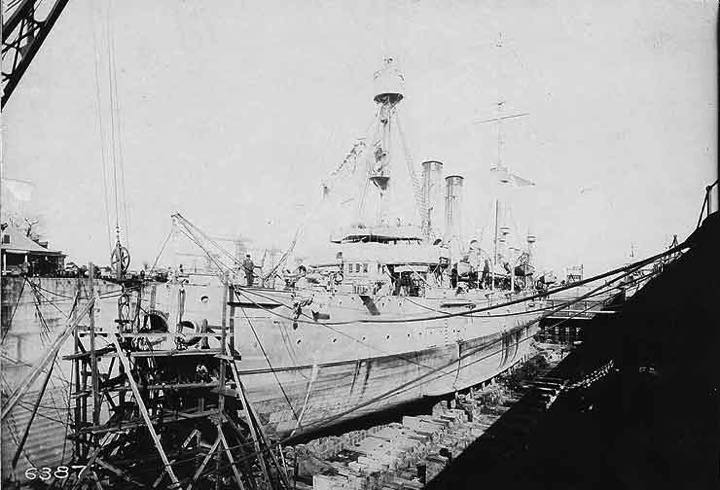USS Denver C-14

Denver
The capital city of Colorado.
(C-14: dp. 3, 200, 1. 308'10", b. 44', dr. 16'9"; a 16 k.; cpl. 339; a. 10 6"; cl. Denver)
The first Denver (C-14) was launched 21 June 1902 by Neafie and Levy Ship and Engine Building Co., Philadelphia, Pa.; sponsored by Miss R. W. Wright, daughter of the mayor of Denver, and commissioned 17 May 1904 Commander J. B. Murdock in command. She was reclassified PG-28 in 1920 and CL-16 on g August 1921.
Between 16 and 26 July 1904 Denver visited Galveston, Tex., where she was presented a gift of silver service from the people of Denver. She cruised in the Caribbean, investigating disturbances in Haiti, then returned to Philadelphia 1 October. During the next 2 years she cruised the Atlantic coast and in the Caribbean, joining in target practice and other exercises, and protecting American interests from political disturbance in the West Indies. Highlights of this period of her service included her participation at Annapolis between 19 and 27 April 1906 in the interment ceremonies for John Paul Jones at the Naval Academy, a midshipman training cruise to Madeira and the Azores in the summer of 1906; and the Fleet Review off Oyster Bay, Long Island, by President T. Roosevelt in September 1906.
The cruiser sailed from Tompkinsville, N. Y., 18 May 1907 for duty with the Asiatic Fleet in the Philippines sailing through the Mediterranean and Suez Canal to Cavite, where she arrived 1 August. Denver visited ports in China, Manchuria, and Japan, and joined in the regular exercise schedule of the fleet until 1 January 1910, when she cleared Cavite for Mare Island. Arriving there 16 February, she was placed out of commission 12 March, placed in reserve commission 4 January 1912, and places in full commission 15 July 1912 for service in the Pacific.
For the next 6 years, Denver cruised the west coast from San Francisco to the Canal Zone, patrolling the coasts of Nicaragua and Mexico to investigate and prevent threats to the lives and property of Americans during political disturbances, carrying stores and mail, evacuating refugees, and continuing the schedule of exercises which kept her ready for action. Between 6 December 1916 and 30 March 1917 she surveyed the Gulf of Fonseca on the coast of Nicaragua, and on 10 April arrived at Key West for patrol duty off the Bahamas and between Key West and Cuba.
Denver reported at New York 22 July 1917 for duty escorting merchant convoys out of New York and Norfolk to a mid-ocean meeting point where destroyers took over the task of convoying men and troops to ports in England and France. Before the close of World War I, Denver made eight such voyages, then was detached 6 December 1918 to patrol the east coast of South America, returning to New York 4 June 1919. Between 7 July 1919 and 27 September 1921, she voyaged from New York to San Francisco, serving in the Canal Zone and on the coasts of Central America both outward and homeward bound.
In the summer of 1922, Denver carried the President of Liberia home to Monrovia from a visit in the United States, returning to Boston by way of the Canal Zone. On 9 October she returned to the Canal Zone for 8 years of service based at Cristobal. She patrolled both coasts of Central America, protecting American interests, transporting various official parties, and paying courtesy calls, returning periodically to Boston for overhaul. Between 20 November and 18 December 1922, she carried relief supplies to earthquake and tidal wave victims in Chile. Between November 1926 and June 1926 she served the Special Commission on Boundaries, Tacna-Arica Arbitration group, carrying dignitaries from Chile to the United States or the Canal Zone on two voyages
Denver's last ceremonial function was her participation in the ceremonies held at Havana 14 to 19 February 1929 to commemorate the sinking of Maine. She returned to Philadelphia 26 December 1930, and there was decommissioned 14 February 1931 and sold 13 September 1933.
 >
>